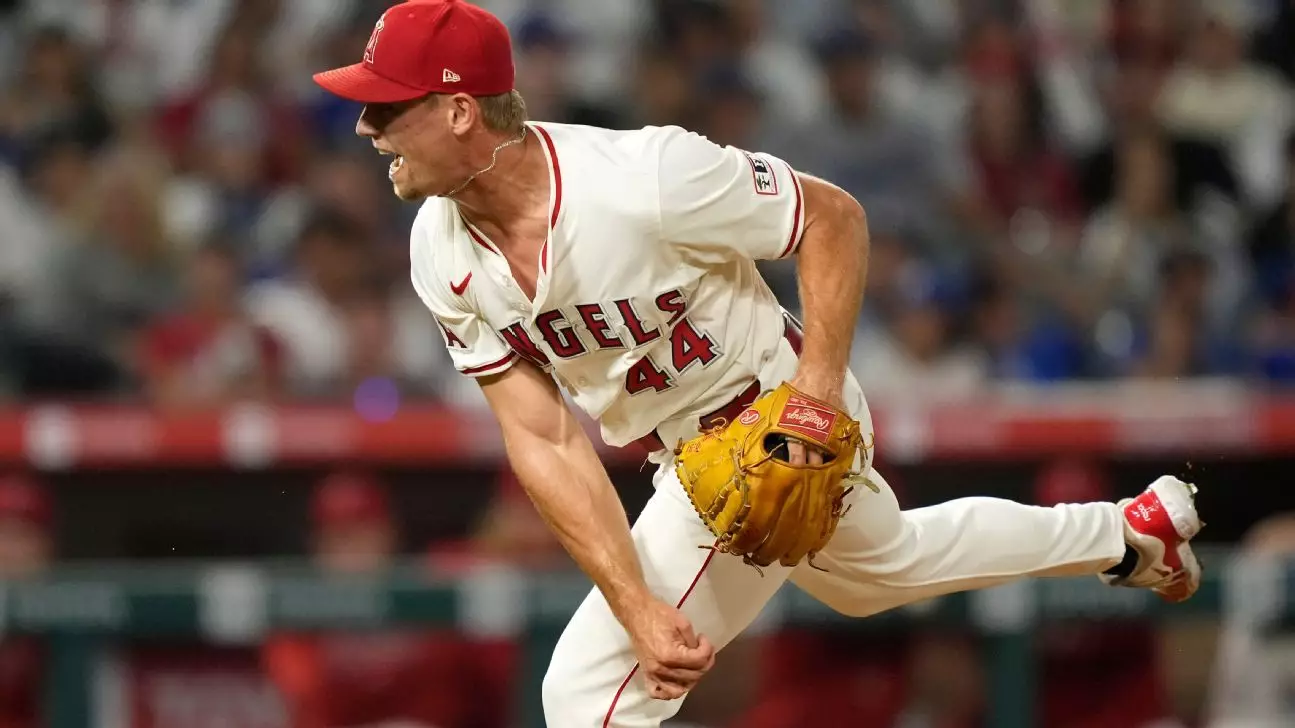Ben Joyce was a beacon of hope for the Los Angeles Angels when he broke into Major League Baseball. As a hard-throwing reliever boasting the ability to hit 105 mph, his potential seemed limitless. The Angels’ organization, known for its struggle to build a comprehensive pitching staff, appeared to have struck gold with the 6-foot-5 righty. In just his second season in the majors, Joyce not only recorded an impressive 2.08 ERA but also showcased his ability to pierce through batting lineups, signaling future roles as both a setup man and possibly a closer.
His remarkable trajectory drew comparisons to some of the greats, but this season’s injuries have put a damper on those aspirations. After spending a considerable time sidelined due to shoulder inflammation, Joyce’s recent surgery marks a significant setback—not just for him personally, but also for the organization looking for reliable arms in a cutthroat division. This predicament raises questions about the sustainability of the physical demands placed on young, high-velocity pitchers.
The Unfolding Situation
The facts surrounding Joyce’s surgery are disconcerting. Although the Angels have not disclosed specific details regarding the nature of the injury, the timing isn’t favorable. After only five appearances this season, his diminished velocity sent alarms ringing through the Angels’ front office. Originally tapped for a pivotal role in the bullpen, Joyce’s inability to contribute not only weakens the team’s immediate performance but also casts uncertainty over future seasons.
One can’t help but draw parallels to other prominent pitchers who faced a series of injuries early in their careers. For every success story—like Justin Verlander—there are several cautionary tales. Joyce’s own history is testament to this unpredictability; he underwent Tommy John surgery during his time at the University of Tennessee and missed an entire season due to an elbow stress fracture before stepping onto the collegiate stage.
A Broader Implication for Pitching Development
The issues facing Joyce highlight a crucial conversation regarding how young pitchers are developed and protected within MLB organizations. The relentless pursuit of velocity seems to take precedence over longevity in modern baseball. Training regimes, scouting priorities, and the sheer physical toll of throwing hundreds of fastballs can lead to devastating injuries.
As teams consider their future strategies, they should take a page from Joyce’s narrative. The need to balance aggressive development with an understanding of biomechanics and injury prevention cannot be overstated. While high-velocity pitchers are alluring to observe, the risk they face speaks volumes about the systemic issues within the sport.
For Ben Joyce, this is a moment of reflection but also of potential growth. If he can recover well and adapt, there’s hope that he could return stronger—however, that is uncertain. For the Angels, it’s an urgent need to rethink their approach, ensuring that talent doesn’t just arrive but also flourishes for years to come.

